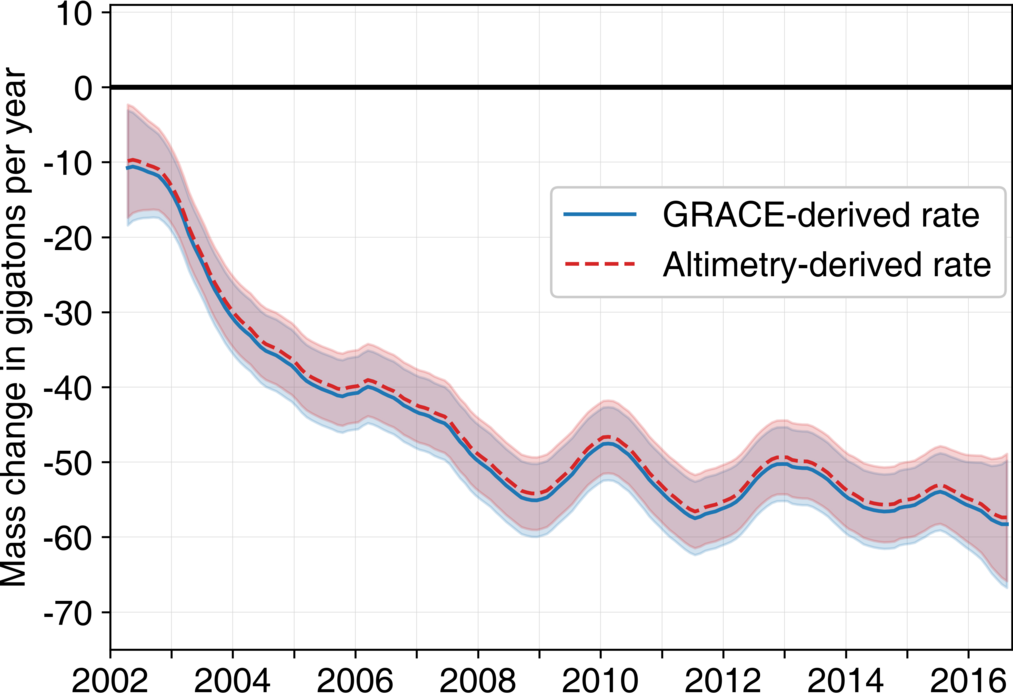Separating long-term and short-term ice mass changes of the Antarctic Ice Sheet
by the OMCG-2 project.
The Antarctic Ice Sheet is constantly changing in volume and mass. Overall, the ice sheet is shrinking, but there are regions with large losses and regions with small mass gains. Mass loss means that more ice is transported into the ocean than new ice is added due to snowfall. The reason can be that the flow of the ice has increased (ice-dynamical change). Furthermore, mass changes occur because the amount of snowfall varies from year to year. In the recently published study “Separating long-term and short-term mass changes of Antarctic ice drainage basins: a coupled state space analysis of satellite observations and model products“, we were able to separate these two processes in several regions of the Antarctic Ice Sheet.
We used data from the GRACE satellite mission from 2002 to 2016. Those satellites measure the changes in the gravity field of the Earth caused by mass changes. Moreover, we used data from altimetry satellites during the same time period. Altimeters can measure the volume changes of the ice sheet by recording changes in ice surface elevation. Changes of snowfall can be calculated using a regional climate model for Antarctica. We combined these sources of information and analysed them with statistical state space methods. We were able to find long-term changes which are due to changes of the ice flow. As an advantage over earlier methods, we allow those changes to vary in speed over time. The results show that there is an accelerated mass loss in West Antarctica caused by an increased ice flow (cf. Figure). In contrast, we identified a long-term steady increase in East Antarctica. We want to examine this increase in East Antarctica in further investigations.
Willen, M. O., T. Broerse, A. Groh, B. Wouters, P. Kuipers Munneke, M. Horwath, M. R. van den Broeke, and L. Schröder (2021). Separating long-term and short-term mass changes of Antarctic ice drainage basins: a coupled state space analysis of satellite observations and model products. Journal of Geophysical Research: Earth Surface. https://doi.org/10.1029/2020JF005966.

